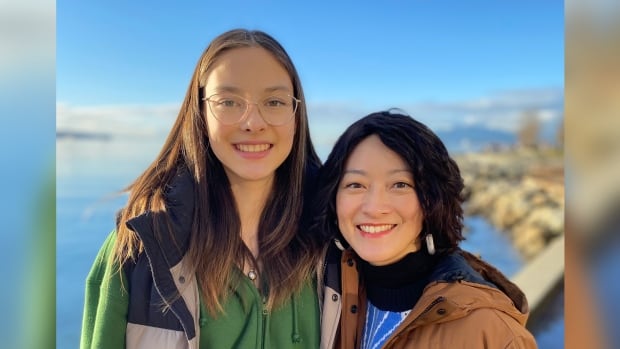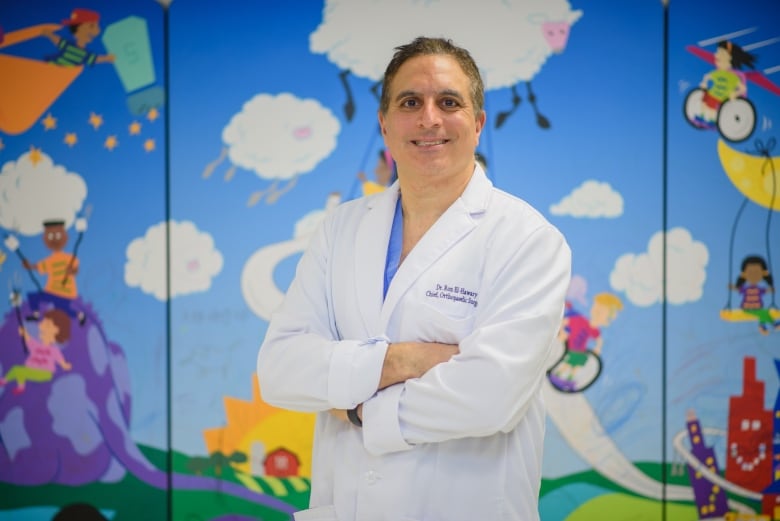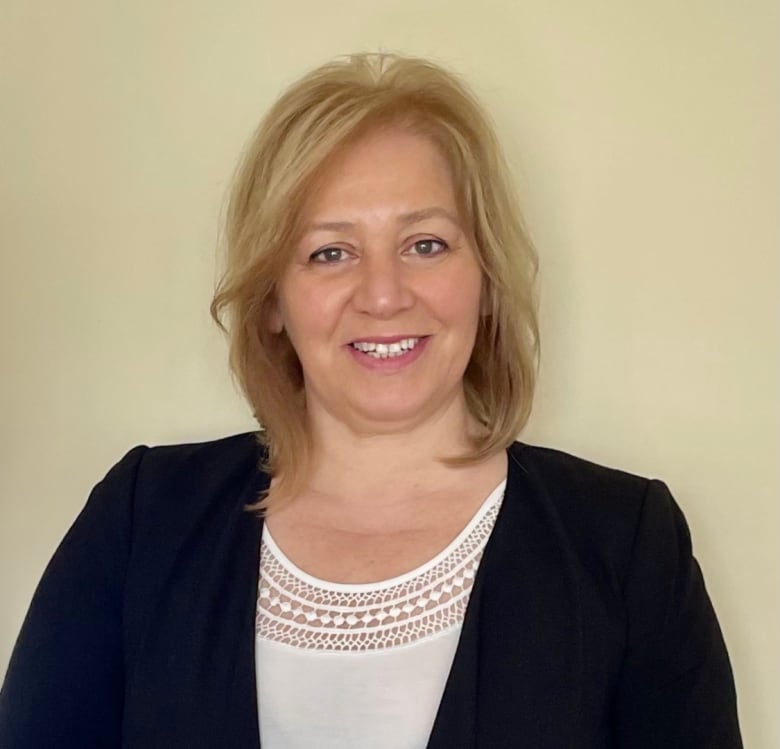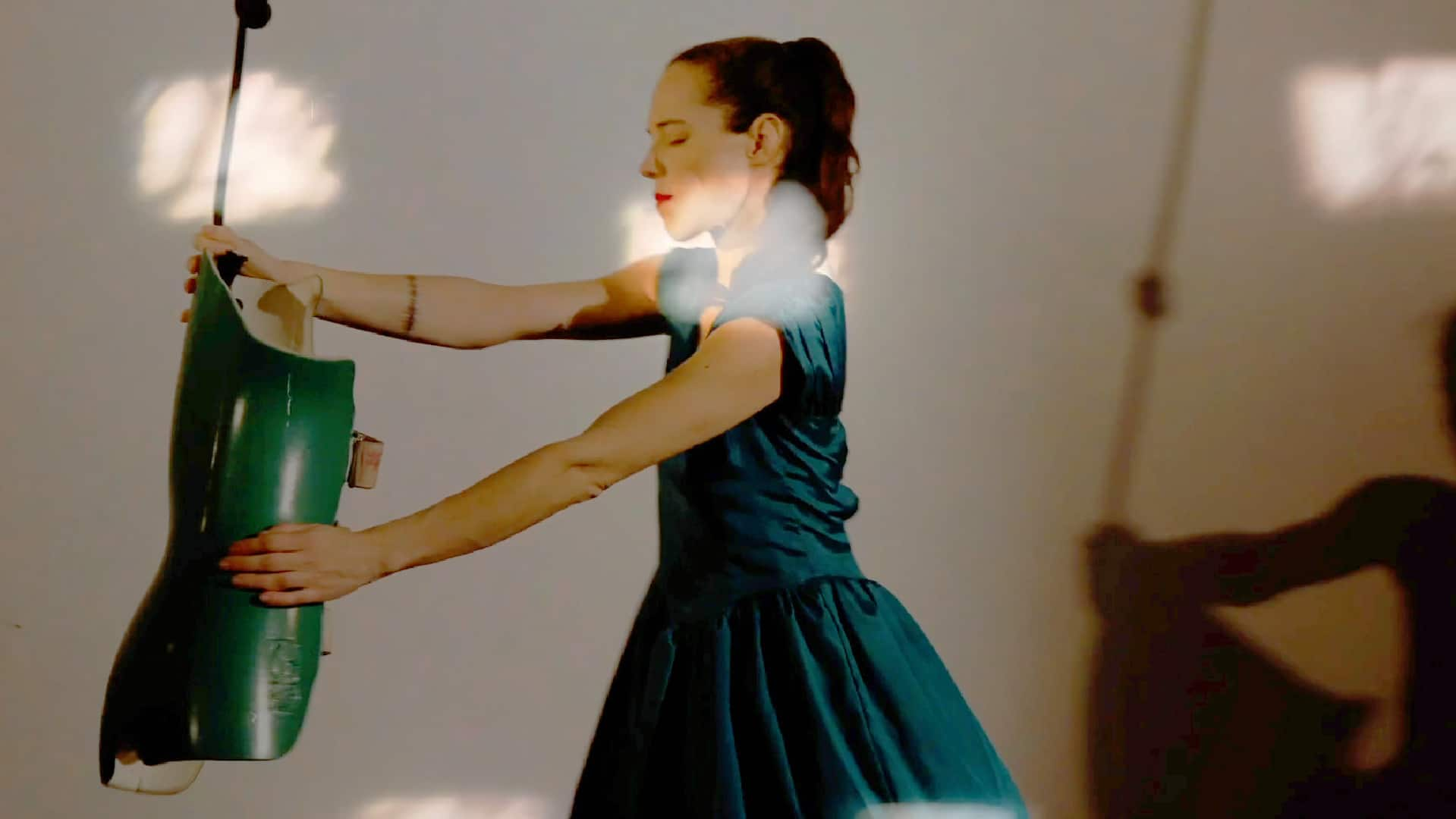
Angie Chan knew by the way her daughter hunched forward that something wasn’t right.
“I did ask her to bend over and show me her spine,” she said.
Running her fingers along the 13-year-old’s back, Chan could feel the way it had curled out of place.
The diagnosis was obvious to the Vancouver resident — it was scoliosis, an abnormal curving of the spine that tends to happen near the start of puberty. In more severe cases, the way the spine bends can put pressure on the person’s heart and lungs.
Research finds that the condition affects about two to three per cent of teens. In a majority of cases, it’s unclear what causes it.
Chan knows the issue first hand because she had surgery to straighten her own spine about 30 years ago. And it’s because of Chan’s own diagnosis that she knew her daughter, Isla Hume, was in a race against time to prevent her spine from curving any further.
Hume wasn’t yet a candidate for the surgery as her spine hadn’t bent severely. Instead, she was able to try preventative measures like braces and physiotherapy.
“We definitely didn’t want to just sit and wait around,” said Chan.
Parents and those with lived experiences like Chan say that if more resources were put into early detection and preventative measures, kids could avoid an invasive spinal fusion surgery. Canada no longer has regular childhood screening for scoliosis, and other forms or prevention aren’t getting the money and attention that surgery does, even though they’ve been shown to work.
For 20 hours a day, Hume strapped herself into a brace. She also went to physio twice a week and did exercises at home.
Now, two years later, Chan says that Hume’s spine has mostly corrected itself to the point where she doesn’t need surgery.
But many kids aren’t lucky enough to catch it early like Hume, which means surgery ends up being inevitable.
Groups push for screening to come back
Scoliosis screening used to be standard in schools; the child would bend forward at the waist and be examined for signs like uneven shoulders, ribs or hips.
But in Canada, scoliosis screening in schools stopped decades ago.
When it was done in schools by people who weren’t fully trained, surgeons said it sometimes led to an overcalling of scoliosis and referring people for X-rays unnecessarily.
In an email to CBC News, Jean Ouellet, president of the Canadian Pediatrics Spine Society, said that the organization is pushing to increase early detection and raise awareness of scoliosis.
The United States Preventive Services Task Force previously had “no recommendation” for scoliosis screening and changed that in 2018 to say there isn’t enough evidence for it to have a recommendation.
Now a physicians’ group in Nova Scotia aims to bring back scoliosis screening there, joining a move across the country.
To that end, they’re educating family physicians and nurse practitioners about evaluating children for scoliosis at an early stage, said Dr. Ron El-Hawary, chief of pediatric orthopedic surgery at IWK Health Centre in Halifax and part of the physicians’ group.
“One of the caveats is that it’s important to have well-trained personnel do the screening.”
Bending and flexing against the metal rods in her spine, circus performer Angola Murdoch tells the story of her life with scoliosis in a production she calls Twist of Fate. Murdoch is performing the acclaimed show Wednesday night at St. John’s International CircusFest.
Avoiding invasive surgery
Right now, Canadian kids are facing long and painful waits to get spinal surgery — putting them at risk for more complex operations.
Orthopedic surgeon Kevin Smit supports early detection now more than ever because the COVID-19 pandemic exacerbated the “disconcerting” wait for children and teens to be diagnosed.
When in-patient appointments stopped, it was difficult to tell over video chat just how much a patient’s ribs noticeably stick out when they bent over to touch their toes. It’s a common first step in diagnosing scoliosis.
Given that those with adolescent idiopathic scoliosis can wait up to 18 months at the Children’s Hospital of Eastern Ontario (CHEO) in Ottawa to get into the operating room, Smit welcomes both bracing and a less invasive surgery that uses internal braces to avoid spinal fusions when possible.
“It’s kind of like putting the brace on the inside of the child instead of the outside,” Smit said of the simpler surgery, called vertebral body tethering.
Tethering can be an option for those with severe curves that are more than 45 degrees who are still growing, Smit said.
“It’s a shorter surgery, they’re in hospital for less long, there’s less pain, it’s an earlier recovery.”

Once a child is diagnosed, El-Hawary says external braces are standard for moderate scoliosis.
Orthotists fit braces and physiotherapists instruct on spine exercises. Nurses troubleshoot with families about wearing the brace and working through any body image concerns.
“If the patients are wearing the brace as much as we hope they would, then the brace is successful about 75 per cent of the time from preventing the scoliosis from getting worse and requiring surgery,” El-Hawary said.
“However, because of the long wait time to get in the clinic, sometimes they miss that window of opportunity.”
For those who do need surgery, Childrens’ Healthcare Canada and the Conference Board of Canada reported this week that 68 per cent of children and teens in Nova Scotia waited more than recommended for spinal surgery, the worst in the country.
It’s not easy to find preventative care
Andrea Lebel, a physiotherapist and owner of Scoliosis Physiotherapy & Posture Centre, opened her Ottawa clinic in 2008. She’s spent years advocating for better scoliosis care in the country, specifically when it comes to being able to access a physiotherapist.
Having her own diagnosis reversed at 12 years old through consistent exercise, Lebel says it’s “unacceptable” that kids these days aren’t getting a timely diagnosis and are then forced to wait months for surgery.

A growing body of research shows that certain types of physiotherapy can improve symptoms; as in Hume’s case, physiotherapy is often used with braces to possibly eliminate the need for surgery.
But right now, there’s a patch-work of funding programs across the country for braces, which can be costly and present a financial barrier for some.
For example, Quebec covers spinal braces, Ontario and Alberta foot up to 75 per cent of the cost, whereas in British Columbia and Nova Scotia it can vary depending on private insurance and the programs a person qualifies for.
In addition to this, there’s also a lack of specialized physiotherapists who are qualified to treat scoliosis patients.
“I have patients [who] come from many parts of Canada who take the trip to come and learn exercises and go home and do them,” said Lebel.
Andrea Mendoza, a physiotherapist and owner of ScoliClinic in Vancouver, says scoliosis treatments aren’t part of the physiotherapist curriculum. People who are interested in this, she says, have to find training themselves. She estimates that there’s about 50 physiotherapists in Canada who have in-depth scoliosis training.
Mendoza and El-Hawary say they want to see the government bring back childhood screening, better fund braces and invest in hiring and training physiotherapists.
Feeling ‘at the mercy’ of the system
Chan said her family felt like they were “at the mercy of our health-care system.”
Being a patient was like “bobbing up and down on this wave in an ocean of a health-care system that is so ill equipped to help you,” she said.
While it took discipline for Hume to wear a brace and go to her appointments, Chan says it made them feel less helpless.
“My daughter taking care of her own body and us as her family supporting her in doing that, is incredibly empowering,” she said.
